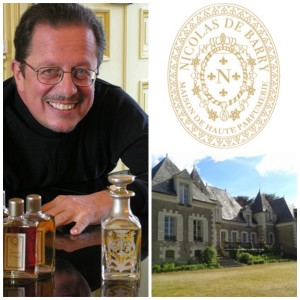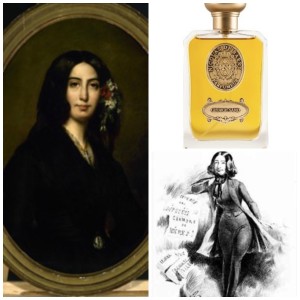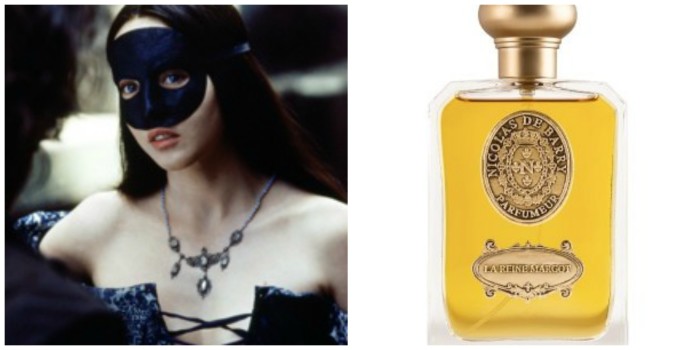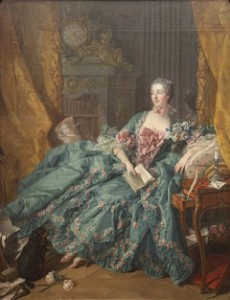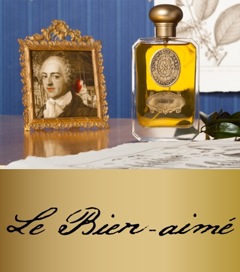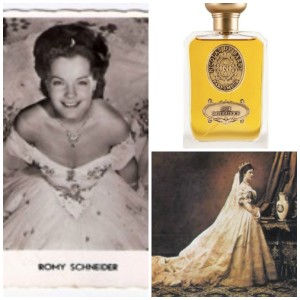Nicolas de Barry and Chateau de Frileuse
Nicolas de Barry, Maison de Haute Parfumerie offers a range of perfumes inspired by historical figures of repute. Nicolas de Barry the nose and founder of the brand has a perfume atelier at the rather impressive looking Chateau de Frileuse in the Loire Valley. In 2003 he created the ‘Les Historiques’ collection of perfumes that were originally sold under the Maïtre et Parfumeur Gantier brand and now are housed within his own range. The perfumes are inspired by scents the historical figures may have worn in their day or around their favoured notes. The premise is interesting and I’m a sucker for a history lesson. So let’s see if these historical figures and the perfumes they inspired will lure you into their world. All the perfumes are of EDP concentration.
George Sand
This French writer, George Sand (1804-1876), real name Amantine Lucile Aurore Dupin, was a freethinker and a woman ahead of her time. She had a penchant for wearing men’s clothes and smoking in public, rather scandalous at the time. She is also known for her liasons with famous men including Frédéric Chopin and Alfred de Musset (a French writer and poet). George Sand also had a love of perfumes, and in particular adored patchouli and bergamot. Apparently she was so attached to her beloved patchouli that in her correspondence with Musset she urged him to send her a package from Paris, with advice on where to procure it. (George Sand has also inspired a number of perfumes. Jardins d’Écrivains, a French perfume house that create perfumes dedicated to writers, has George and Histoires de Parfums by Gérald Ghislain 1804. Nicolas de Barry George Sand is an oriental with a beguiling spiciness. If it is intended to summon the persona of George Sand then I am definitely a fan. It has a bright bergamot and lemon opening before segueing into warm amber undercut with an earthy patchouli. If you’re a little shy of patchouli it is noticeably present but not too forceful. What adds a nice touch to this perfume is the spiciness that brings the scent into the twentieth century and I dare say hints at George’s nature. A dab of rose adds a feminine slant and overall this is a warm, embracing, perfume that is assuredly unisex. Wear this while listening to Chopin’s Nocturne in E flat major, Op 9, No 2 and take a trip back in time.
La Reine Margot: If you’ve seen the blood soaked French film La Reine Margot starring the luminous Isabelle Adjani you will have an inkling of the passionate nature of Marguerite de Valois (1533 – 1615) and will be aware of her fearsome mother Catherine de Medici. Nicolas de Barry has attempted to recreate a perfume that Marguerite would have worn. Author Janine Garrison studied the archives and accounts of Chateau d’Usson in Auvergne, where Marguerite spent 18 years in captivity courtesy of her brother, Henry III. Her research revealed that La Reine Margot regularly ordered amber, musk and jasmine. These favoured ingredients were used in this perfume. La Reine Margot is a sweet, lush, night blooming jasmine with an added bite. It’s heady, possibly a bit skanky and it’s lovely. The musk has a rugged facet and amplifies as it warms. There is a sweet honeyed amber here too, and is tenacious, staying for the long haul. Marguerite would smell magnificent wearing this perfume sprayed on her thick robes while weaving her way through plots, stepping over slain lovers and skirting around slaughter. You need to be a lover of jasmine to be won over, but if you are still searching for one with guile, this may be your Medici poison.
Madame de Pompadour Francois Boucher
Is Madame de Pompadour the most famous mistress of all time? Born Jeanne – Antoinette Poisson (1721-1764), she was the long time official mistress of Louis XV and was known for her love of the finer things in life. History has been kind to her and she is highly regarded as a patron of the arts, an intellectual (a good friend of Voltaire’s) and for her skill in keeping her position as the King’s favourite, long after the bedroom antics had run dry. She also had a love of scent, much needed at Versailles to cover the pervading smells. Apparently she used orange flower water for her migraines and adored the scent of flowers growing in her gardens. This perfume was made to convey Madame Pompadour’s love of flowers and indeed this medley of floral hits may have satisfied her desires. There’s a green tinged opening with hyacinth taking a prominent role, followed by a sweet and powdery iris. Other florals soon join the parlour. This is a full sitting. Enter rose, jasmine, tuberose, carnation, narcissus and violet. Madame Pompadour is a perfume that stimulates the imagination and alludes to the excesses of life at Versailles. It’s not a perfume that I would wear myself, yet I could imagine this scenting a home resplendent in vintage blooms.
Louis XV Painting by Maurice Quentin de la Tour, 1748 and Nicolas de Barry Louis XV
The King of the perfumed court in France, Louis XV (1710 – 1774) also known as Louis the Beloved is a man remembered as a less than effective ruler, whose reign sowed the seeds of discontent leading to the French Revolution. His love of women and perfumes is also recorded. A secret passage from his chamber to Madame Pompadour’s was built for their privacy and they liked to exchange perfumes as part of their love play. Louis XV the perfume centers on orange and neroli and the opening flickers like the early morning sun. It smells delicious. It sweetens on skin with the addition of the floral centerpiece. Even though it shares a similar floral arrangement with Madame Pompadour, Louis XV is more subdued in feel, less dense and to my nose eminently more wearable. The amber base is delicate and above all it has an elegance that perfectly captures a pleasurable state of refinement.
Romy Scheider, Elisabeth Amélie Eugénie de Wittelsbach and Nicolas de Barry L’Impératrice Sissi
Elisabeth Amélie Eugénie de Wittelsbach (1837 – 1898) was born into Bavarian royalty, married into Austrian, and eventually become both Empress of Austria and Queen of Hungary. All was not well in the strict Hapsburg court however, with its rigid conventions and a controlling mother in law. As a result Elisabeth spent much time away on freewheeling travels. She wrote poetry, and was somewhat fanatical about maintaining her youthful beauty through diet and remedies. The Empress had a range of evening facial regimes and among her favourites were violet soaked cloths and masks of veal or crushed strawberries. L’Impératrice Sissi is an indulgent dose of gourmand vanilla and candied violet and iris. You may be drawn to this perfume if your tastes run to the likes of Lipstick Rose from Frederic Malle, but here the vanilla takes centre stage with violet playing back up and a powdery iris sitting in the wings. It’s young at heart and sings like an impossibly highly pitched soprano. It’s not quite my style but I can imagine this would have its fans and has grown on me over wearings. I like it more as it settles and becomes less vociferous, with the volume dialed down a notch.
Disclosure : My samples were provided by Fragrance and Art for review
Megan, Contributor and Editor of the lifestyle blog, Megan In Sainte Maxime
Thanks to Fragrance and Art, we have a draw for two readers, one in North America and one in the EU for a sample set of all five Nicolas du Barry reviewed. To be eligible please leave a comment with which historical figure fascinates you, which of the fragrances of Maison Nicolas du Barry apeal to you the most and where you live. Draw closes 2/28/2015
We announce the winners only on site and on our Facebook page, so Like Cafleurebon and use our RSS option…or your dream prize will be just spilled perfume

